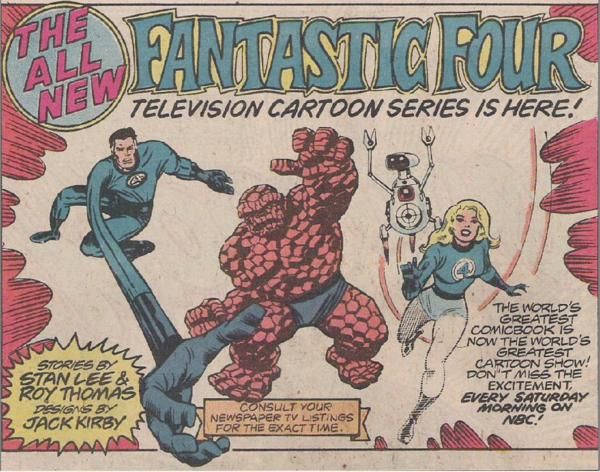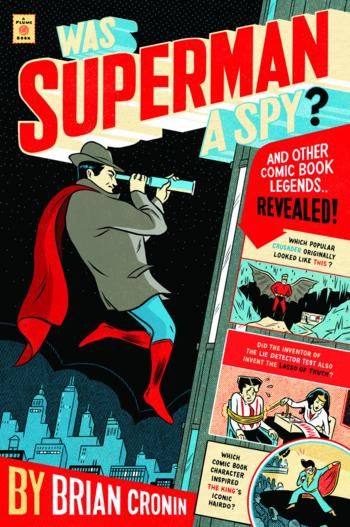The good folks at Penguin Books were kind enough to allow me to share a few sample pages from the book.
Enjoy!
First, once again, here is the cover by Mickey Duzyj, who is great (click to enlarge)...
Here's the introduction to the book (pages xi-xii) (do note that the book is in black and white)....
INTRODUCTION
Amusingly enough, it all began with falling for an urban legend myself. A few years ago, I wrote on my comic blog, Comics Should Be Good! about comic book writer-artist Walter Simonson’s run on the comic book title Fantastic Four in the late 1980s and early 1990s. I made a comment regarding Simonson’s distaste for the ways some writers had handled the Fantastic Four’s most famous villain, Doctor Doom, over the years. Simonson had written a story that could explain away many of these appearances as having been made by imposters. I had read more than once that Simonson privately kept a list of the character’s appearances that he specifically felt should be ignored. Well, sometime after my comments were published, I received an e-mail from—who else?—Walter Simonson!
Simonson kindly pointed out that he had never made any such list but that he repeatedly had heard people refer to the supposed list! Simonson specifically noted how bemused he was at the fact that he himself was the subject of an “urban legend.” While chagrined over my error, it occurred to me that there were plenty of comic-book-related stories out there that have been passed around for years without being checked out, so I decided it would be a great idea to either confirm or debunk them. In June 2005 I began a weekly column on the topic.
Three years and over 500 urban legends later, here we are with a collection of 130 comic book stories—65 of my favorite legends from the column plus 65 brand-new legends! Some of them are false and some of them are true, but all of them demonstrate the fascinating history of comic books.
In an effort to make it easier to find the legend you’re looking for, I’ve split them into three parts: one for legends related to DC Comics, one for those related to Marvel Comics, and one for legends related to all the other great comic book companies out there.
I had a lot of fun compiling these stories, and I hope you have a lot of fun reading them!
Here's one of the 130 legends in the book (pages 97-99)!
The Fantastic Four have appeared on television in a variety of animated forms, but probably the strangest take on the concept was their 1978 animated series, produced by DePatie-Freleng Enterprises for the NBC television network. The series starred Mr. Fantastic, The Thing, Invisible Girl and H.E.R.B.I.E. the robot?! Yes, this series did not feature the Human Torch, but instead placed a robot as the fourth member of the team (the robot was co-created by Stan Lee and Jack Kirby, at least - the last time the two men worked together on a project). H.E.R.B.I.E. stood for Humanoid Experimental Robot, B-Type, Integrated Electronics.
Most viewers guessed that the reason for the exclusion of the Human Torch was that the producers of the show feared children might attempt to emulate him by lighting themselves on fire.
And in the 1980s, in an issue of The Fantastic Four, writer John Byrne had a child do just that, as an homage to the rumors (it also made for a powerful issue, starring Johnny, as he deals with his guilt over the incident). A producer who had worked on a Fantastic Four cartoon series even cited this as the reason why the Human Torch was not used (which was odd because, while he was a producer for a Fantastic Four cartoon, he was not the producer for this Fantastic Four cartoon, and on his cartoon, the Human Torch did appear).
The truth was much simpler. After the success of The Incredible Hulk, Marvel licensed out a number of other heroes to Universal Studios for possible television series or made-for-television movies. One of these heroes was the Human Torch. The project went as far as to have a script written, but nothing was ever filmed (most likely due to the extreme difficulties of depicting a man on fire in the 1970s – it is difficult today, even with the aid of computer graphic effects, so it was incredibly difficult back then). Universal was not involved in the cartoon, and it would not make a deal to allow the Torch to be used, so he was omitted from the series.
As an interesting side note to the whole affair, a few years after the cartoon ended, the California studio where DePatie-Freleng Enterprises produced its shows was destroyed. How was it destroyed? The building burned to the ground.
Thanks for reading!
Be sure to check out Legends Revealed (legendsrevealed.com) for more legends written by me about the world of sports and entertainment!


